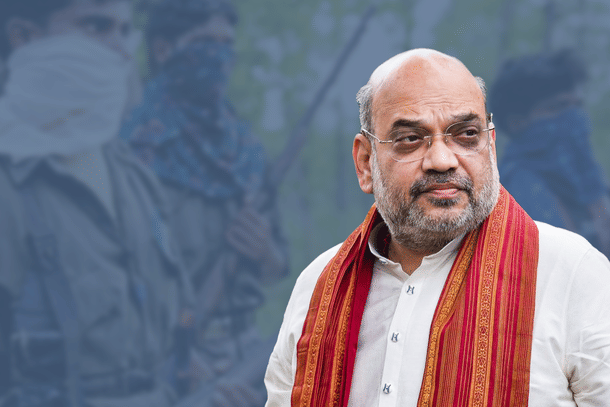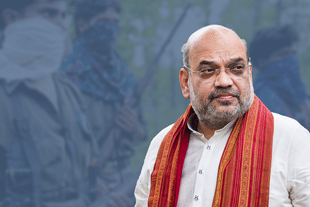News Brief
70 Per Cent Decline In Left-Wing Extremism Incidents In Past Decade: Amit Shah Chairs Review Meeting With States
Swarajya Staff
Sep 27, 2021, 04:27 PM | Updated 04:27 PM IST
Save & read from anywhere!
Bookmark stories for easy access on any device or the Swarajya app.


Union Home Minister Amit Shah chaired an important meeting to review the state of Left Wing Extremism (LWE) in the country recently.
The meeting was attended by chief ministers of Bihar, Odisha, Maharashtra, Jharkhand, Telangana and Madhya Pradesh, the Home Minister of Andhra Pradesh, Union Ministers, senior security officials and senior officials of state and central governments.
The chief ministers of Chhattisgarh, West Bengal and Kerala did not attend the meeting, and instead sent senior officials.
It was informed in the meeting that in the past decade, there has been a consistent decline both in the violence figures and its geographical spread. The incidents of LWE violence have come down by 70 per cent from an all-time high of 2,258 in 2009 to 665 in 2020.
The resultant deaths have also come down by 82 per cent from an all time high of 1,005 in 2010 to 183 in 2020. The area under Maoist influence was also constricted with the geographical spread shrunk from 96 districts in 2010 to just 53 in 2020.
While speaking about the achievements and the progress on curbing of LWE in the country, Amit Shah also urged states to undertake various measures for continued reduction of LWE.
He said that the root cause of dissatisfaction was lack of development in those areas since Independence.
He advised that the chief secretaries of the affected states hold a review meeting with the DGPs and officers of central agencies at least every three months to deal with LWE.
He also asked the chief ministers of the states to pay special attention to LWE so that the problem could be eliminated at the earliest.
While speaking about the measures being taken by the central government, he reminded the delegates about the various pacts signed by the government with extremist groups including Bodoland Pact, the Bru Pact, the Karbi Anglong Pact and the surrender by the insurgent cadres of Tripura which had brought over 16,000 cadres into mainstream society.
Further, he informed that in the last two years, a huge and successful effort has been made to increase security camps in areas where security was not stringent, especially in Chhattisgarh, as well as in Maharashtra and Odisha.
He also stated that the Centre had brought down the fixed expenditure of the states for deployment of Central Armed Police Forces (CAPFs) because of which, there was a reduction in expenditure of a total of Rs 2,900 crore for the year 2019-20 as compared to 2018-19.
The detailed measures taken by the Centre were also outlined in the meeting.
Development Measures Taken by the Centre
Road Connectivity: Out of the sanctioned 17,600 km of roads, 9,434 km of roads had been constructed.
Telecom Connectivity: 2,343 new mobile towers have been installed and 2,542 additional towers would be installed in next 18 months.
Financial Inclusion: 1,789 post offices, 1,236 bank branches, 1,077 ATMs and 14,230 banking correspondents have been opened.
Education: A total of 119 Ekalavya Model Residential Schools were functional and an additional 115 such schools have been sanctioned.
Apart from this, the central government has been helping in modernisation and capacity building of state police forces.
Areas of Concern
It was informed that a few new areas had been identified as potential locations for emergence of this phenomenon.
To arrest the expansion plan of the CPI (Maoist) and also to restrict them from bouncing back in areas recently taken away from LWE influence, eight districts had been categorised as ‘Districts of Concern’.
It was stated that the revised categorisation was a more realistic representation of the current LWE scenario.





